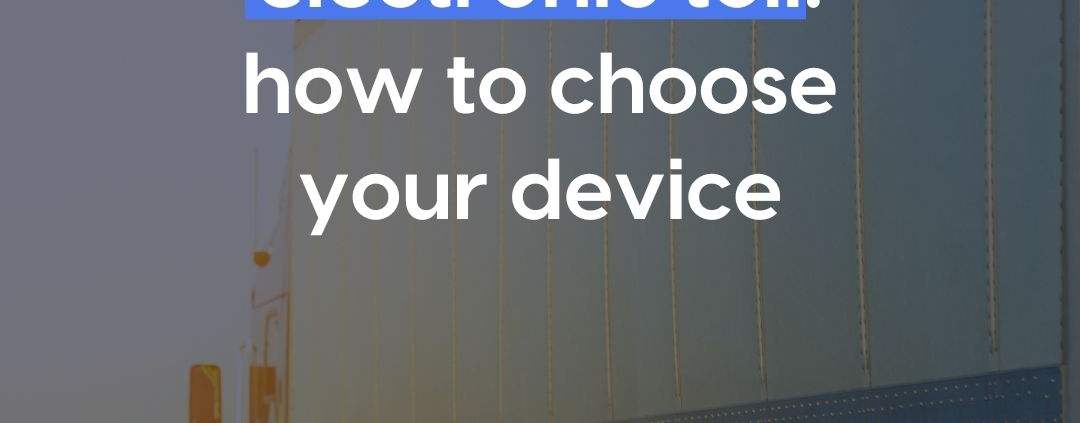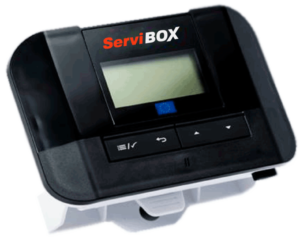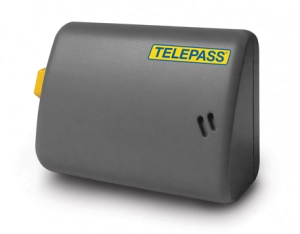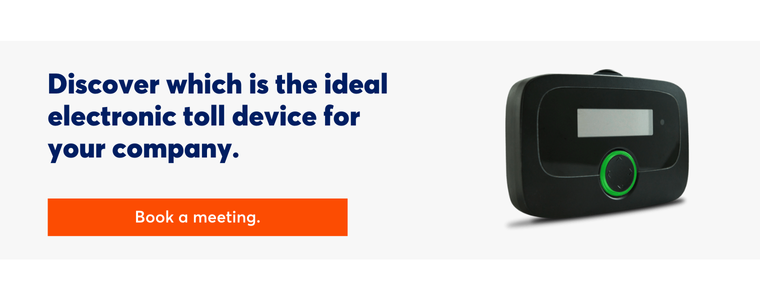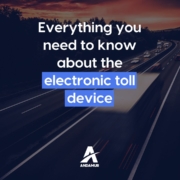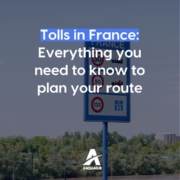In this article we offer you key information about concessioned motorways, the European Electronic Toll System and the most suitable devices for travelling around the territory.
European electronic tolls: networks and reach
Electronic tolling, also known as electronic tolling or electronic toll payment, has revolutionized the way drivers travel in Europe. This system allows drivers to pass through tolls without physically stopping or using cash, considerably speeding up road journeys and improving traffic flow.
At the moment, each country maintains its own electronic toll networks, and establishes the regulations and traffic criteria. Therefore, it is important to know the conditions and requirements when planning routes. Later in this article, you will find specific information about each case.
However, significant efforts have been made to facilitate international movement. The latter, which have a positive impact on freight transport, are detailed below.
European electronic tolls: towards an integrated network
In recent years, progress has been made towards integration, with the possibility of having a single toll system for the whole of Europe. “It is only a matter of time before we allow technicians to work to achieve the goal of having a single device that allows the payment of tolls, fees and vignettes throughout Europe, including security car parks, as well as offering services such as fleet management and vehicle tracking,” says Juan Diego Guillén Saura. Commercial Director of Andamur.
In this sense, we have already seen great progress: there are electronic toll devices that work transnationally, being able to operate on highways and tunnels in different geographies.
The European Union has tried to simplify the toll payment process across the continent through a service called SET (European Electronic Toll Service). The initiative aims to simplify toll payment on the continent by allowing drivers to use a single on-board unit (OBU) for all toll systems, managed through a single contract with an EETS provider.
Prior to this milestone, freight carriers needed to register their vehicles in each toll system separately. This resulted in multiple contracts with various suppliers, each with its own billing procedure. Thus, a large bureaucracy was generated that consumed time and resources.
In addition, many toll systems also required their own OBU, leading drivers to have their windshields full of OBUs to cross the continent and to have to familiarise themselves with various systems.
How does the European Electronic Toll Service (EETS) work?
There are three main actors in the ETS: users, EETS providers, and toll collectors.
Providers enter into contracts with users and grant them access to the EETS system throughout the European Union. This significantly reduces the amount of paperwork required by the freight forwarder: instead of entering into contracts with each toll domain, they only need to do so with their supplier.
Users subscribe to a SET provider of their choice. It charges them for the tolls their vehicles incur when travelling in the EU.
A great benefit of SET for users is the reduction in the number of OBUs needed: instead of separate OBUs for each toll domain, they can use a single OBU for the entire EU. This reduces distractions for drivers and means they don’t have to familiarise themselves with the specificities of each toll system.
Collectors impose vehicle tolls on a SET domain. They usually have no contact with users unless there is a compliance issue. Less time spent managing toll users means they can focus more efforts on road and traffic management, which is a key benefit of the system.
European electronic tolls: particularities by country
It takes note of these central points for transiting through the main European networks and making appropriate use of electronic toll devices in Europe.
Electronic toll in Spain
The road network in Spain is divided into motorways and dual carriageways. The former can be concession with toll or free; while the latter are free of charge, at the expense of the State or of each Autonomous Community.
Electronic toll in Switzerland
In this country, heavy transports and trailers weighing more than 3.5 tonnes are subject to a tax that is based on criteria such as: kilometres travelled in Swiss territory, total authorised weight and carbon emissions of the vehicle.
Electronic toll in Hungary
Here, the toll road network is managed by NUSZ (National Toll Collection Service) and covers more than 6000 km of motorways and national routes.
Freight transports with a PTAC greater than 3.5 tonnes have to pay toll rates with a VAT of 27%. This calculation will depend on the type of route travelled, the number of axles of the vehicle and its category.
Electronic toll in Poland
In this country, those transports with a motor that exceed 3.5 tons will have to pay tolls on the Polish network that is managed by the national operator SZEF KAS and other private operators.
The toll system is mixed: On the one hand it is Open in the e-Toll network thanks to the microwave system and Closed in the A1, A2 and A4 networks by video tolling and DSRC technology.
The calculation of the toll to be paid will depend on the number of kilometres travelled, the weight of the transport and the polluting euro class.
Electronic toll in Italy
The network has more than 6000 km and is managed by 25 motorway companies, with different toll systems: closed, open and free flow.
In Italy, payment per on-board device is mandatory and the cost is calculated according to the number of kilometres travelled, the category of the car, the price table, the barrier system and the characteristics of the road.
Electronic toll in France
A large part of the motorways and motorways are toll roads, with values that depend on each route measured in kilometres. The cost for trucks or trailers that exceed 2m in height is higher than the standard value.
In this article you can see more information about the toll network in France.
Electronic toll in Portugal
Here, a significant part of motorways, dual carriageways, some tunnels and bridges are charged, combining two types of tolls: “in sections” and a modern electronic toll system.
Electronic toll in Germany
This toll network is the largest in Europe and those transports whose weight exceeds 7.5 tonnes remain obliged to pay a fee.
There are different systems: the “LKW Maut” network with more than 50,000 km of roads and motorways and the El Herrentunnel. It can be paid manually or automatically.
Electronic toll in Belgium
The network is about 6500 km long and transports weighing more than 3.5 tonnes are subject to a kilometre tax that is mandatory on the road networks of the three regions of Belgium (Wallonia, Flanders and Brussels capital) and requires the availability of an on-board device in each vehicle.
Electronic toll devices suitable for travelling in Europe
At Andamur we offer the best electronic tolls for Europe, allowing your fleet of trucks to become more efficient, avoiding delays in transit through electronic toll networks.
With our solutions you will be able to travel without inconveniences, in the most optimised way and controlling your expenses. Discover our devices:
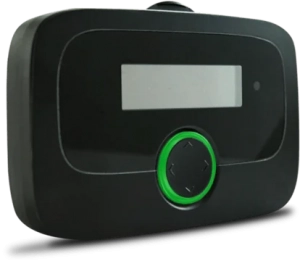
Toll4Europe
- It covers a total of 16 toll services: Spain, Portugal, France, Italy, Austria, Poland, Denmark Storebælt Bridge, Sweden Øresund Bridge, Germany, Germany Warnowquerung Tunnel, Germany Herrentunnel Tunnel, Bulgaria, Switzerland, Belgium, Belgium Liefkenshoek Tunnel and Hungary.
- Ability to activate and deactivate countries at no additional cost.
- France discounts with subscriptions are optional and individual for each device.
- Activation and deactivation of services within 24/48 hours of the request.
- Change of enrolment allowed and processed between 24 and 48 hours.
- Device blocking allowed per customer or per device with a time frame between 24 and 48 for processing.
- Available in 22 languages.
- A free informative app is available.
- Standard delivery time between 3 and 5 days.
- Easy installation.
ServiBox
- It covers the following countries: Spain, Portugal, France, Belgian Tunnel, Belgium, Italy, Austria, A4 Poland (Katowice-Krakow), Poland (e-Toll Network), Denmark, Norway, Sweden, Switzerland, Germany and Bulgaria.
- Satellite device
- Management of consumption, enrollment and services.
- Easy and intuitive.
- Security and control over your fleet through the KMASTER management service.
- Ability to activate or deactivate countries at no additional cost.
- Available in 14 languages.
- Delivery time of 5 working days
Interoperable EU
- Easy installation device with radio frequency technology.
- Available for Spain, Portugal, France, Italy, A4 Poland (Katowice-Krakow), Austria and the Belgian tunnel.
- Delivery time of 5 working days.
- As an Andamur customer, we recover VAT from your invoices under exceptional conditions and minimum commissions.
How to choose your Andamur electronic toll device according to your route?
With several alternatives on the market, we must always emphasise that there is no ideal device for all companies.
The choice depends on the type of routes each one takes, the size of the fleet and the needs of the drivers. Selecting the right one has many benefits. Not only does it reduce stops and optimise time en route, it also favours obtaining discounts and tax refunds.
In addition, there are devices that integrate fleet management systems or mobile applications. If the company requires it, this can be of great help.
Advantages of electronic toll devices
Using a European electronic toll device will bring great advantages to your vehicle, company or fleet of private trucks. The benefits are:
- Optimising Truck Fleet Management
- Simplification of invoicing when recovering VAT on trips.
- Efficiency of the sections travelled.
- Organisation of administrative paperwork and its consequent procedures.
- No language knowledge is required when making the payment since it is done automatically in the corresponding language.

